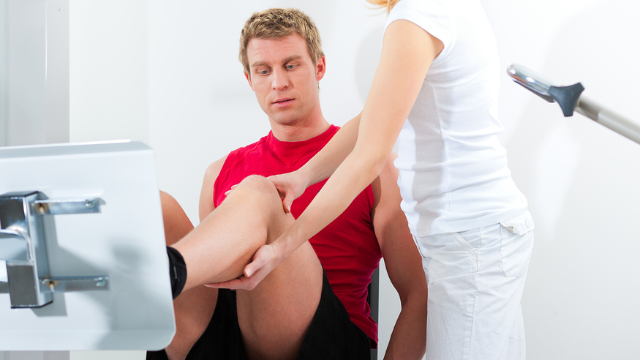News
Thigh muscle exercises are beneficial for knee condition patients

Updated review of studies needed
Patellofemoral pain syndrome (PFPS) is one of the most commonly reported injuries in the field of sports medicine. The condition is most prevalent in runners and active individuals, and individuals who have it experience pain behind and around the kneecap that tends to get worse with squatting, prolonged sitting and stair activities. Treatment for PFPS typically consists of physical therapy, with a focus on exercises that strengthen the quadriceps muscles in the front of the thigh. This type of intervention is popularly used, but evidence to support its effectiveness is not very strong. The last review of studies on the topic was in 2003, and it only found little evidence that these exercises were effective for PFPS. For this reason, an updated review of the available literature-which is called a systematic review-was conducted, with the aim of determining the true effectiveness of quadriceps-strengthening exercises for PFPS patients.
Researchers perform a search of three databases for appropriate studies
To conduct the review, researchers performed a search of three major medical databases. They were specifically looking for high-quality studies called randomized-controlled trials (RCTs) that evaluated the effects of quadriceps-strengthening exercises for PFPS. RCTs randomly assign patients to various treatment groups and are considered the gold standard for determining whether an intervention works or not. This search led to seven RCTs being included: three RCTs on 204 participants investigated quadriceps-strengthening exercises alone, while five RCTs on 422 participants investigated quadriceps-strengthening exercises combined with other interventions. Once gathered, the researchers reviewed the findings of these RCTs and compared them to one another. The quality of all included studies was also assessed in order to gauge how reliable their results were.
Quadriceps-strengthening exercises alone and in combination reduce pain and improve function
On the whole, results were supportive of quadriceps-strengthening exercises for PFPS patients, both alone and when combined with other exercises. It was found that when they were performed alone, these exercises were more effective for reducing pain and improving function in patients when compared with advice and information alone. When combined with other interventions-such as hip-strengthening exercises, stretching, kneecap taping and home exercises-these exercises were also found to reduce pain for up to 12 months; however, they did not appear to improve function. This lack of improvement may be due to patients self-reporting their function scores, which has a margin for error. Nonetheless, the findings of this systematic review clearly show that quadriceps-strengthening exercises are beneficial to individuals with PFPS, whether used on their own or combined with other interventions. Based on this, patients currently dealing with pain that could be PFPS should think about seeing a physical therapist to receive an appropriate treatment program with these components to help them improve quickly and safely.
-As reported in the June '14 issue of JOSPT
August 7, 2018
Disclaimer:
The information in the articles, posts, and newsfeed is intended for informational and educational purposes only and in no way should be taken to be the provision or practice of physical therapy, medical, or professional healthcare advice or services. The information should not be considered complete or exhaustive and should not be used for diagnostic or treatment purposes without first consulting with your physical therapist, occupational therapist, physician or other healthcare provider. The owners of this website accept no responsibility for the misuse of information contained within this website.
